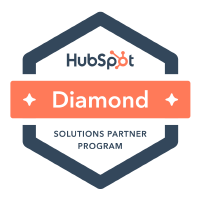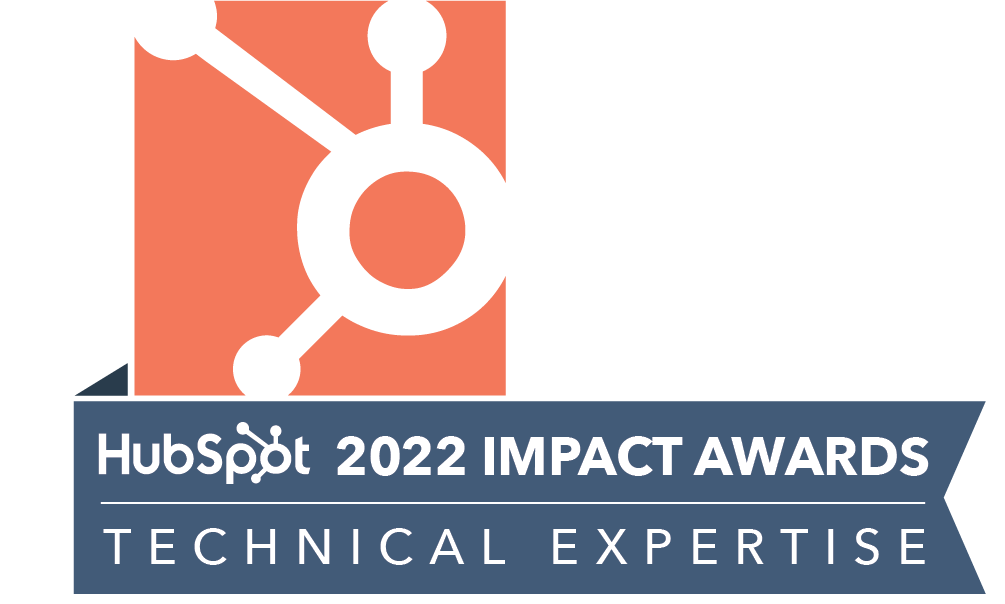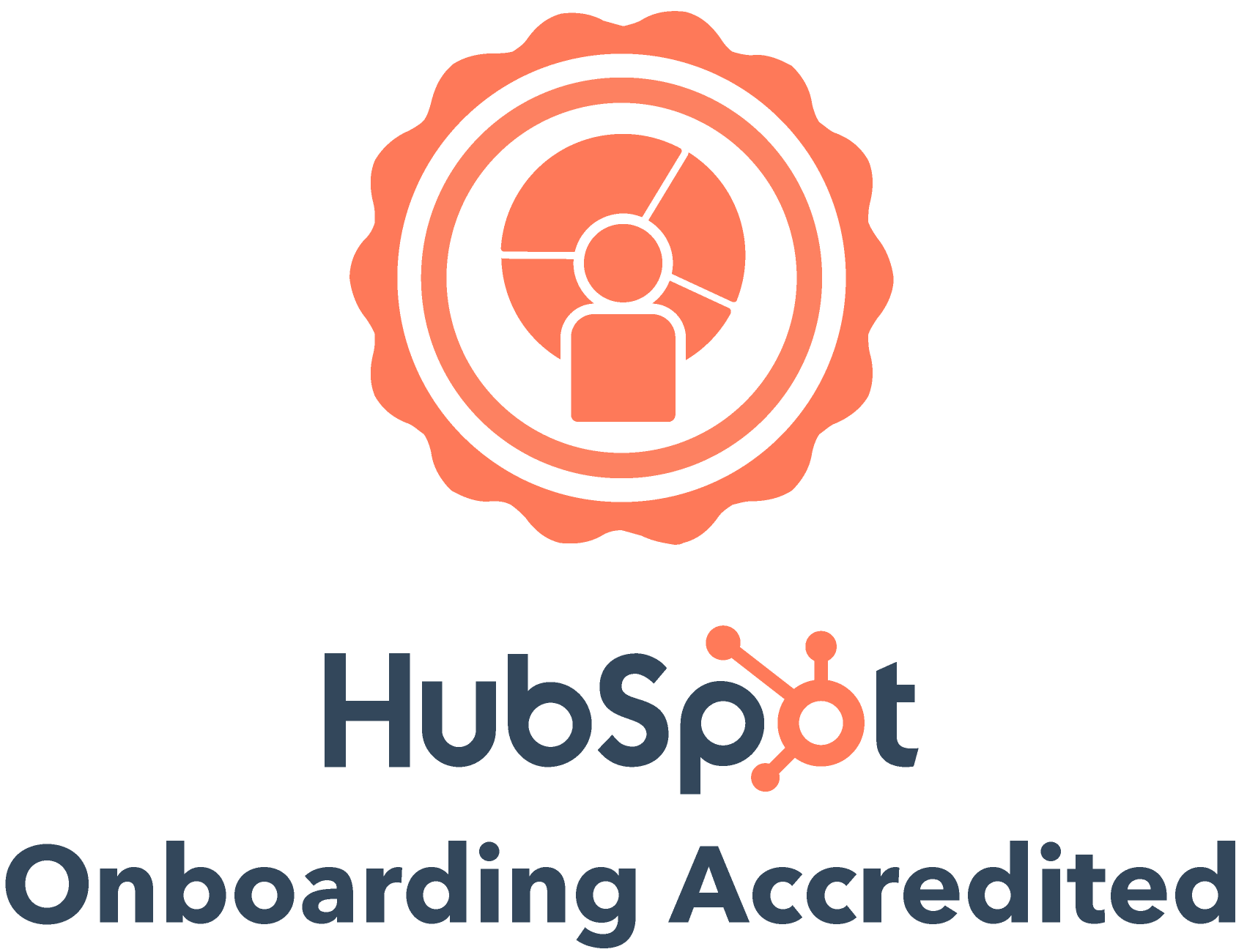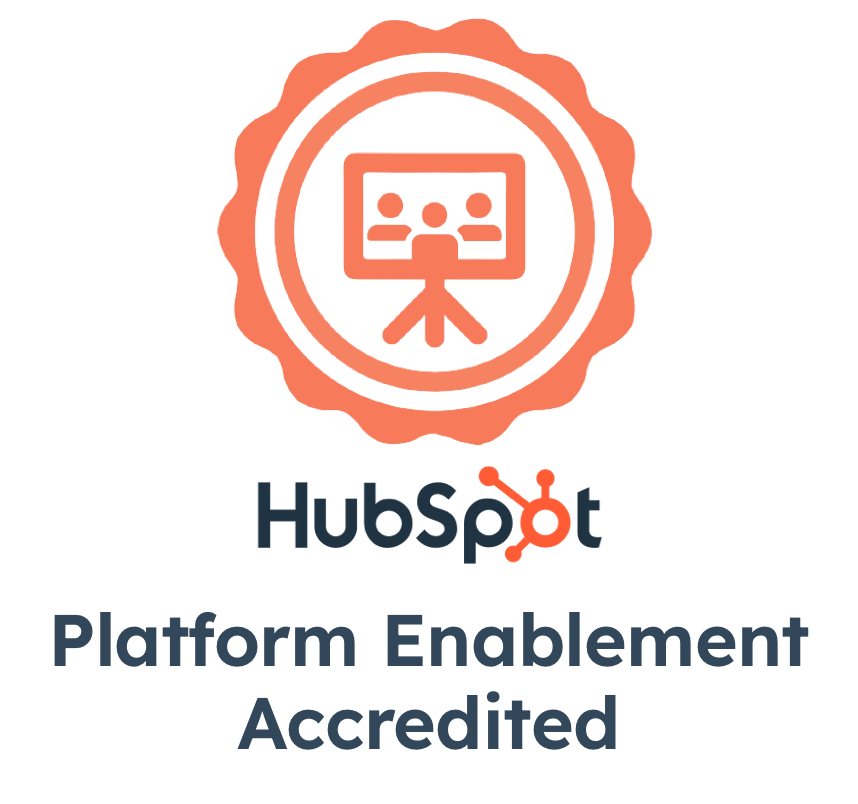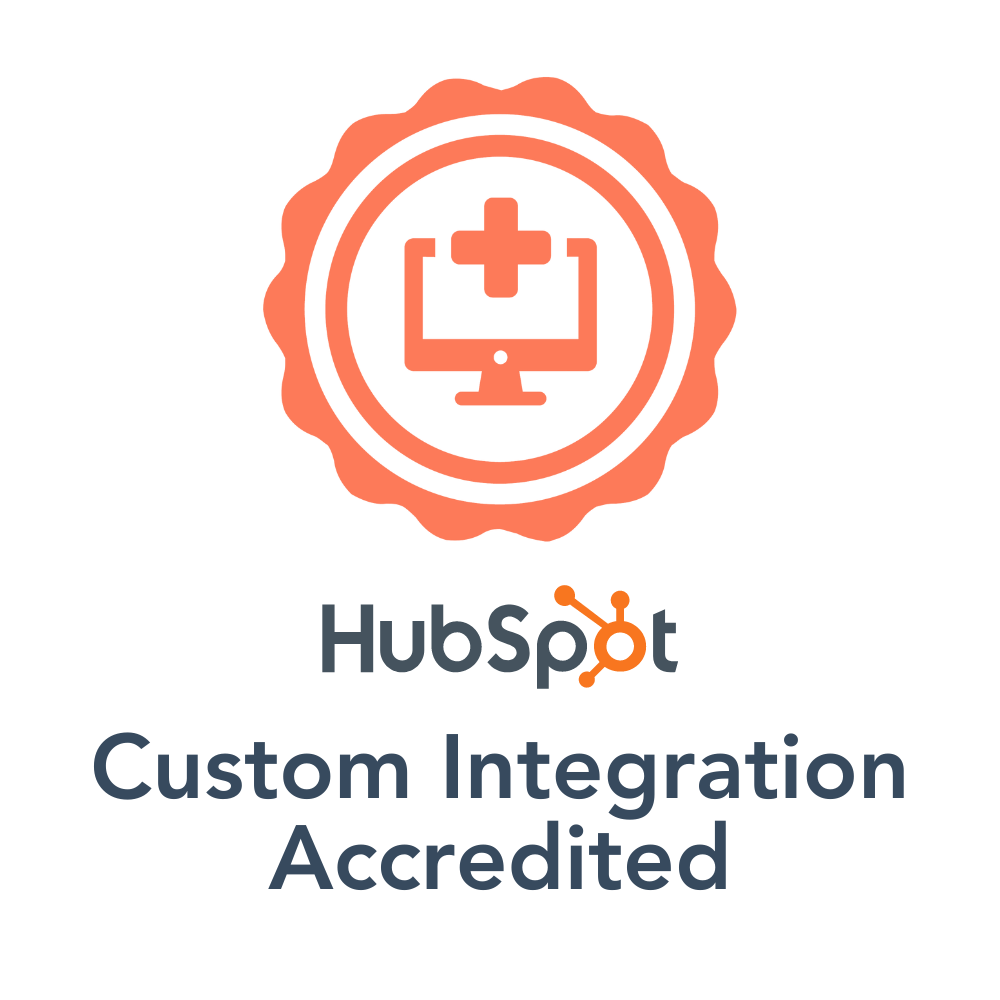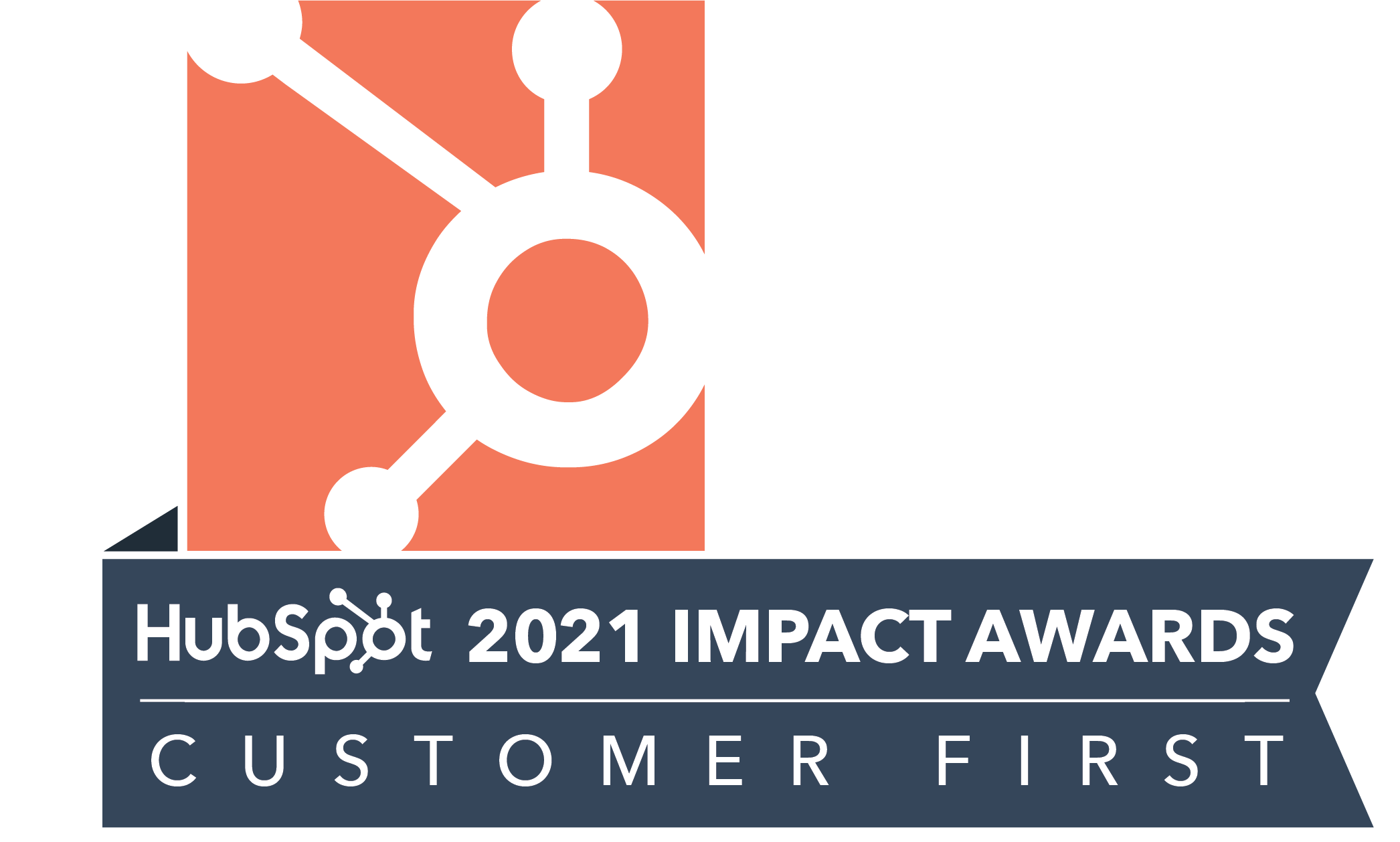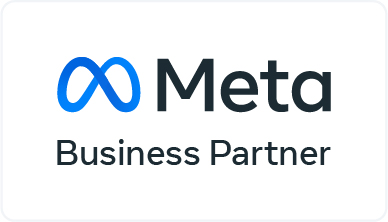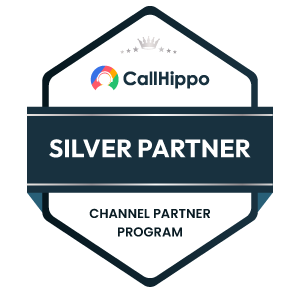The episode dives into navigating the crucial 'build vs. buy' decisions, the right metrics to chase, and knowing when to let go of an innovation experiment. We also explore the potential of Generative AI in boosting the time-to-market for innovation projects, and some in-depth insights into how to bring tech innovation into "un-sexy" industries.
Let's get started👇👇
Listen on Spotify >>
Panelists:
- Piyush Upadhyay, Chief Business Officer - Digital, OfBusiness
- Adarsh Noronha, HubSpot Country Director, India & SAARC
- Suma EP, Co-founder, Niswey
Timestamps:
- 00:00 - Podcast and panelist intro
- 03:45 - Piyush’s journey with large-scale digital projects and entrepreneurship
- 09:14 - Chief Digital Officer and Transformation
- 23:44 - Building an in-house GTM platform for OfBusiness
- 25:23 - Innovation vs. Not Rocking the Boat - how do you choose
- 31:00 - Building teams that will power innovation projects
- 36:06 - Bringing tech to the ‘not-so-sexy’ businesses
- 51:26 - Generative AI & its powerful impact on innovation projects
- 56:50 - Concluding thoughts on driving innovation projects
Transcription
Suma: Welcome to another edition of Martech CXO Dialogues. And today, along with Addy, I have Piyush Upadhyayan, the CDO of OfBusiness. I think Piyush and I first met maybe like 12-13 years ago. He was building a media product for Bharti Softbank. Then after a few years, we again met when he was building a healthcare platform. Then after a few years again, I met him when he was building what is currently, what is heading right now, but it was very early stages back then. And he was talking about how to make meaning out of tender documents for people who want to apply for tenders. So you can see that he's been in many different places, in many different industries, but always a product and a platform guy. So I think this is a very interesting person to have on the show. And so welcome, Piyush. I want you to talk about your journey through this all.
Piyush: Sure. Thank you so much, Suma. I mean, I don't know if I should take the credit of being in and around everywhere. So it can sound like very vague that this guy is not consistent. But yeah, I think over the years, I have come to that realization. I am one of those guys who wears his heart up on his sleeves kind of thing. So whatever I like doing, I just jump onto it without thinking much. And I think to an extent, I've not been personally financially prudent about it. So some of those things come in bite, but then all for the passion and love, right? So that's how it has been. So my professional life has actually been, The way I look at it today, sitting after two decades of experience close to, is literally divided into two parts. Almost one decade in sales and marketing distribution kind of roles. And the other decade has been more on the product side. So first decade was more about new product launches, more about marketing distribution, new service line creations, and stuff like that. And the second part has been more around digital product build out.
I started my career with Airtel, spent some time at McKinsey, quickly realized that this is not something I want to do. I wasn't very, let's say, pro to call myself as a builder builder. Today, that term is very, very common. I can relate to that term very clearly. But I think I had that instinct that, no, this is not something that I want to build. I want to be on the ground. I want to do that. So one of the EMs, when I was leaving, she said, like, I always knew you're not going to stick around there. I said, why do you say that? I mean, I'm taking it back. I've worked with you most closely all this while. And she was like, no, there are some people who get very jittery when they are just doing presentations and not actually making it go live. While I was part of the delivery team, which was actually more closer to the ground, but still, I mean, you as a strategy consultant, you are only as much there.
But yeah, second half of my career has been more around building digital products. The first big exposure that I got was with Bharti Softbank. And that was the first time that I saw what investments can do to creativity and innovation. I was given almost a free runway to be able to build what I wanted to built in-house entire platform. Of course, we had the help of Young Japan and stuff like that because of SoftBank being around. But the real innovation and why the flavor of why a big company struggles to innovate, whereas a tech startup, well-funded tech startup can do magic around it in a very short span of time. That was the first flavor that I got into.
I think, of course, it matured into Wynk Music, which was a very big creation for myself and for the team as well. And yeah, it was a proud moment because we created something literally out of the bag. In seven months, that entire Android and iOS apps were out, streaming music, and I remember when Bhuvan and me had met Srini, who was a B2C CEO for Airtel at that point in time. So Bharti South Bank was out of the Bharti stable. I mean, this was a group company, but running independently at that point in time. Of course, later on, it went and merged back into the Airtel ecosystem. So Srini said very, very candidly, he said, listen, you guys are like a bunch of And we have vendors lined up who are willing to white-label their entire proposition. I don't want to name those vendors. They are very big names today. But of course, Airtel has and had the power. And they are willing to white-label. So why should we actually be going ahead with you guys to put an entire marketing, open an entire marketing front behind music, so to say?
And my simple answer was, I mean, we did this just 12 months back with Airtel Live. You have to trust us. What is there for you to lose? We're just asking for six months. That's all that we need. If we don't deliver, you can just cover up after six months. I said, OK, fine. Let's take that bet. And that bet worked for, I think, every one of us. So that was a big transition and gave me confidence as well.
But I think later on, post that, I think I became overconfident. I delved into my own entrepreneurship journey. HealthTech, of course, we met. That was kind of an arrangement where already a platform was existing, trying to mold it into a consumer platform. Failed miserably. I think I always imagined myself as a detail-oriented person and I think the amount of detailing that entrepreneurship asks for is humongous. Failed a couple of times in a matter of 18-24 months. One in health tech, one in food tech. And, but yeah, lots of learning. I mean, that's what has shaped me today to what I am. I've learned a lot from Ashish who is the CEO and founder of our business. I mean, the amount of rigor that is required to build a scalable business and build it fast and build it frugally. I mean, three dimension, right? Frugality, you have to build scale, and you have to build it fast. I mean, it takes the hell out of you. But, but yeah, when you do it, and even you look back and like, wow, what have we built? How far have we come? So yeah, this is long and short of it.
I mean, a jack of all trades, I mean, put me into the design, put me into the marketing efforts, put me into the product side, put me into, no, not tech, no, I can't code. That's the only piece which is running. I am keen to, I have a, co-founder of sorts with me on the SaaS side that I, the SaaS charter that I run for our business, which is Satya. And I've been after his life, like, can you make me learn codings? Just a bit of coding using ChatGPT so that I can explain that, yes, I can also code.
Adarsh: That was a very nice segue into generative AI that we wanted to speak to you about. Before that, awesome congratulations for a career that you just took us through. What a beautiful journey. And I think not many get the kind of opportunities that you got. And I think it just shows how dedicated you are to your trade. And probably for the listeners, they will be going through some of the questions that I was going through when you were narrating. So maybe I will put forth some of them.
But as a CDO, when you look back, what would be your guidance to some of the folks who are in your are similar in your situation as well in their respective career journeys. To make those moves, to identify those opportunities, and to take those bets on. So you're talking about scalable, very highly business-impactable solutions that you are building. So the decisions that go before that, what kind of technology? Should we buy this? Should we build this? How much of it should we build? How do you keep the bulb glowing? Failure mechanism? How do you make sure nothing goes wrong? And if something goes wrong, what do you do? How do you really prepare for it? And what's your guidance for those who are on similar steps at this moment?
Piyush: I think it's very difficult to teach and share on these things. That's a very honest answer. If somebody was to tell me that, did I know 10 years back or 15 years back, or even five years back, yeah, sure, I had a sense of it. But yeah, 10 back, I quite really did not have the sense. I just had a vision at a 40,000 feet level, right? That this is something that I want to do. I love doing this.
I think another honest confession. I don't know, honestly, the CDO title, right? It's a very vague title. It's up to you how you want to define that. Some people can really gatekeep it and then say, OK, I will drive digital technology into the company. OK, whereas I see it very differently in terms of digital is a proxy for transformation. That's why the CDO title came into the picture, into the ecosystem. Because the company said that, listen, we don't have understanding in terms of how to drive this digital piece. So we need people who can actually drive this digital piece.
I've seen this all through my career. It's a big cultural shift. And different organizations try to handle that shift differently. And I think that's how the CDO role. So for me, when I look at CDO, it's a very, very big transformation role. But it has come down to more about tooling, about frameworks that you need to do, the IT spends, where are you spending, and stuff like that. So it depends entirely. I think the only thing that, to answer your question, I mean, I think it's more to what you as an individual want to do. As an individual, if you're interested in terms of identifying the right technologies and then do it, yeah, sure.
You need to look behind what is expected out of this CXO role. Is the CXO role is about identifying tools, identifying is the scale already there? Or is the CXO role actually asking you to drive transformation? Or is the CXO role is asking you to get something else? And what do you need to do that? If you need to drive transformation, then you need to understand sales, you need to understand product, you need to understand technology, you need to understand marketing, you need to have the 360 view of everything. But if that role is primarily about, yes, this role is cut out and some part is being done by somebody else and some part is done by this or that, then that role is just limited. And it's fine if your interest is more inclined towards going deeper into the tech stack. So it's entirely up to you where do you want to be and hence trace back. Are you building skill set accordingly? So that's how I would say it.
Suma: I would just go back to what Adi asked earlier. So when you were deciding to work with let's say BSB or some other healthcare platform, how were you taking that decision that this is what I want to do? Like you said, I was doing it intuitively or just like that, but was it really like that?
Piyush: It was, actually. Health and food, I'm very passionate about. I don't look like one. But I think I am very passionate about it. There are reasons, of course, personal reasons. I have a lifestyle disorder, which is called ankylosing. Of what it is. And I think the level of tech innovation that is in health care is very limited. And what you can do with that, I've been in front of best of doctors of India, and they are not interested to change anything. That's for a very simple reason. There is no motivation for them to change.
As a patient, what control do you have to influence that? What is that you have? Tech has a power to change a lot of things. And that's why I said, I think I was not as detail-oriented and not exposed as much as the complexity around it. But today, you do see startups trying to shift, move mountains by using tech, because the data points that you have in the patient health records, you can do massive effort about it. Particularly with the data science and the data analysis that is available today, particularly with Gen AI and stuff like that. And I'm sure somebody would crack it at some point in time. But so the stuff that you're aware of, right? I mean, we were able to keep the imaging together. What was what MPHR was doing at that point in time. And as a patient health record, my point was that me as Piyush, can I trace all my life, all my patient history in one place? Nobody has solved it till date millions of billions of dollars have been put into the place but then you cannot identify a single place where you can actually aggregate your patient health records hospitals will do it by themselves one hospital will give it as a marketing tactic but for a patient you cannot it's it's your effort to do that so So it's more passion.
Similarly, food, because I think nutrition is what moves us. We are not as aware. There is, of course, a lot of effort which is going around in the markets now to be the side effect of sugar. And I agree, that's the biggest addiction, which goes unnoticed, and everybody feeds you sugar. But a daily nutrition, right? I mean, how do you fix that? And as we are getting busier and busier, can you actually fix that? So it requires a massive effort and distribution that can be done in terms of packaging that can be done.
But, but yeah, it requires, I think, the amount of capital and time and innovation, it's a different level. So those are two things, right, that I tried. I mean, and then there is value system, right? One of the biggest reasons why I joined Optinus was the focus to Build scale, as I said, frugally and quickly. Can you do that? That was something which I realized from my failures that I'm short at. So I needed to learn. I needed to learn in a more secure environment where capital raising is not my problem. I can play around with things. I have some room to move around. I can mobilize teams and stuff like that. So when you're in the safe environment, you can perform better. So those kind of things.
I really believe that. Whatever you're passionate about, just do that somewhere or the other. Yes, it may not be the most financially prudent decision because, yes, you can get a very high-paying job somewhere else and then do it, but then it's your call. How do you want to balance this out?
Adarsh: How do you manage the setbacks there? How do you manage when the ownership of the decision is on you? How do you manage hindrances? Really not feeling up to the market milestones? How do you manage that?
Piyush: Yeah, that's, that's a tough one. It takes a lot of toll. I'll be honest about it. Because it's very, at times there are very conflicting priorities, right? Because at the end of the day, you also have personal priorities, right?
And I think the only framework that you need to keep going back onto is, why did you decide to step into this? Was this for short term or for long term? Are you capital invested here? Like a typical startup, right? You took this initiative because you say, in 18 to 24 months, it will pay off. So I have to stay put. I have to keep pivoting. I have to try something else. If this is not working, I need to try something else. Why is it not working? What is going wrong in here? Before you give up, of course, one should almost know when to give up, but it's a very important decision to know when to give up. You don't give up early, you don't give up late. You need to give it up at the right time. I'm sure there is no right time, but as much as the right time as you can. So yeah, it's a very treacherous journey. But it's like love, right? When you fall in love, and then you don't care in terms of what's going around you. And then you keep going that path, keep going that path till the time either you finally make it or you finally give up. So it's like that.
Suma: And I believe at OfB you've done your own GTM solution. I want to talk about that. Sure.
Piyush: We had a very unique case. I'll take you a little bit into the website to make you understand why we did what we did. When we started, B2B is a very different beast than B2C, right? So we don't have volumes of data to be able to manage. We have volumes of data points to manage.
But not really. I mean, we're talking about, for example, just to give you a sense, right?
The entire India target market for us, the target market, not the universe, but the target market for us is 4 lakh government contractors. So by any B2C standards is a very small set. But what happens is that 4 lakh government contractors is a blind set. You will not get any information about them anywhere. Government data is a duck horse. You will not get hold of any damn information, in spite of the fact that government publishes all of that information. But to make sense of that data is really, really hard.
I think I understood that very early. And we agreed within the OB ecosystem that this is something which we really want to go after. And we, of course, we've taken a long, long, long while to be able to build it. But we understood that this is core to us. This is not something which is on the periphery, but this is what is core to us. This is what will pay off. And that is what has paid off in terms of very low CAC to the business, particularly in the initial years. I mean, today, with the sales teams on ground, et cetera, of course, the nature of the business has changed. But initially, to get that jumpstart, it really helped.
Now, what happened was we had a vague visualization at that point in time to say that, oh, if I know about this contractor, then I want to know everything about this guy, like what various credit sites do today, right? With basically your PAN number, like Sybil does or anybody else does in a P2P site.
And we want to have that entire tale in terms of what has this guy done, where is he buying the material from, what is he doing, what kind of material does he require, da-da-da. Which meant that we need to integrate various different sources of information, whatever little scanty information is available here and there, and then beef it up with whatever we need to do. So we couldn't have identified. There is no systematic information around this, right? So we need to build this ecosystem around it.
Now, in this ecosystem, if we bring in a third-party tool, then it becomes all the more complex, because we don't know what to integrate, how to integrate, where to integrate. And then we have external third-party further dependency onto that. So we evaluated a lot of tools. And then we said, no, we need to start by ourselves first. We need to build by ourselves first and then see how does it how does it stack up? And we decided to go that path. It's as simple a story like that.
Now today, if you were to honestly ask me and say, okay, go back in time and relook at the decision, would you still do that? I think possibly not. I think undermined the complexity that the CRM system is going to And we went on what we decided that this is core to us. I think we stumbled upon non core areas. But we were too down there to be able to get out from there. So all that we could do then was that okay, fine around the periphery, wherever whatever is now now we are very conscious because also obviously the scale is also large. So we're very conscious in terms of wherever there is non core even around the CRM areas, we stay out of it.
And we then integrate the third party tools to be able to build on to that. But the heart is lying with us. So now we build that out. Another flavor to this also is that we have a lead magnet in terms of businesses, right? That's where bulk of our leads happen. What business also does is also offers leads to end customers.
Now, what are leads? They are basically a matchmaking of this guy, this government contractor is relevant for you because for XYZ reason. When we do that, what we call as profile, which is equivalent to a LinkedIn profile, is almost the same thing as what we see it internally. So our internal and external customers are exactly the same. And we open up the entire chronological order of this guy to say, these many tenders participated, these many areas participated, this is the area of operation, this is the So the entire data classification, segregation set, everything just runs exactly the same.
And hence, the build versus buy decision, I think, is complex for us. But yeah, I'll again repeat the same thing. If today you were to ask me and go back in time and then say, OK, fine, I think I'll think twice. I remember one of the statements from Sunil Mittal when I was in Hyderabad in one of the town halls. And he's like, listen, if today somebody was to ask me that, would you enter telecom again, I said, I think possibly not, because the amount of complexity that this brought in, if I even knew about it, I was happy doing everything else which was doing. I would not. So it's one of those stories.
Adarsh: That is also from a position of having been there, done that, and you can look back at it. And I think the amount of experience you gather in that journey is unparalleled than just buying a tool and getting a plug and play kind of a feature and then not really going through the turmoil. I just wanted to elevate that experience and the journey that you said to ask you something that is probably core to every senior executive who is part of any digital transformation in any company that they work for.
It's not more on build versus buy though. How do you identify your top priorities there?
Many people come from different backgrounds, people jump companies, they gather different experiences. And somehow, I've seen people follow the herd. And innovation somewhere takes a backseat compared to, all right, this is a company that globally is well known. So the product that they give must be good. If I buy that, my job is safe. Instead, somebody thinking, here is a smaller company or a new age company, which is more agile, And does the job better? Can I take a risk on that? So somewhere, I think it's easier options for people to go at something that is, it's an insurance. Oh, no, sorry. What is your take on this?
Piyush: The thing is in terms of how we define success metrics. And if the success metrics is defined as, you know, doing something, or time to market, then obviously you will end up picking up a tool. If your success metric is innovation ROI, or what we call as time to money, how quickly can I actually convert this into real money, the model will change. People mostly don't do that. People all measured in terms of my appraisal is going to come in in 12 months and to show progress to your point. And hence, the time to market, the predictability takes the front seat. And the return on investment, or innovation ROI, as we call it, takes the back seat. Because that will come four years, five years down the line. Who is going to stick around until then? I'll move on to some more greener passion and just move along. And nobody realizes it, right? Until some time, like three years, four years later, when the company leadership team suddenly looks back and says, oh, what happened here? And it's a very new world, to be honest. I mean, nobody really knows in terms of how this needs to be done, what needs to be done.
And we're also short of patience. Patience is what I feel. Everybody wants to get it quick, get it moving. Nothing happens like that. It takes time. So you can't get nine women to get a baby out in a month. It doesn't happen. It will take its own sweet time. And I'll go back to what you said. I think this has been one of the most complex parts in my journey as well, because making people understand going to take time. We need to be patient about it. And sticking your neck there. And like, okay, fine.
I think one thing that I feel is that as investors, and I'm not talking about financial investors, always, even within internal organizations, there are investors, right, some sponsors, if we want to call them. Who have got you in. They are already convinced in their head that yes, this role is important, somebody needs to deliver this role, etc, etc. But they also have to like, particularly a CEO, if you're reporting in the CEO, the CEO has to manage day to day operations of a cash cow business which is running. Now, the CEO also needs to build the future. He needs to be confident that the investment which is going on, because he needs to manage the ROCE. Now, if that ROCE needs to be managed, and in that time, he also needs to divert some investment onto something else, which is running as an experiment, he needs to be very, very confident of this is going to pay off.
So somebody needs to be telling him, yes, this is working. This is what this is what the roadmap is. These are five things that we have done, because the money will come in much later. So you need to build the agree with the success metric. And they said, we be chasing this right now. And chasing this to chase a final goal, end goal state, this is how it will happen. So that's internal selling needs to happen. And that internal selling and then measurement needs to happen. Because if you if something that you don't measure, it will never change. So you need to measure, you need to put that measurement in place and then detach yourself from the experiment
It's not about your experiment, it's about the right thing to do. If that experiment is not working, it's a failure and then you pivot on to something else, etc. So it's almost running like a startup even when you're doing it in a large company. If you don't believe in it if you like like a startup entrepreneur if you say no I am going to make this work whatever it takes I am going to either pivot or I am going to shut it down but I will run it like that then your the answer to the question whether I should build versus buy versus what the tool that I need to pick what is that I what is the tool will deliver to me
Suma: And how successful have you been in building a team that sticks on for that long, for however long it takes to hit that goal or hit that result?
Piyush: I think that was, I think, kind of blessed. The teams have stuck around and people that have worked around have actually built teams in spite of the fact that I think as and when my team will listen to it, they will go a little loose. But I'm a hard taskmaster, and I'm not easy on my teams. But yes, it's not that I don't appreciate their effort. But then I think the expectation is huge and humongous. But some of it is also, I think what happens is when you are early in your career, you want to give it your best. So that is something that I've seen at our business. I've seen with Digital.com. I've seen it at BSB.
The younger guys are willing to learn and give in far more, though that trajectory has changed a bit over the last three or four years, post the 2021 boom in the startup. But I think when we pick guys, we take a lot of time to look for what is this guy after? Is this person going is looking for money? Or is this person looking to learn? If that person is willing to learn, and if there is a passion behind it, it's much likely that the guy is going to stick around. Of course, there is going to be people will leave. It's bound to happen.
But if your key guys are sticking around, most of your roadmaps are kind of getting delivered. But there is also a reality. As much as you plan, as much as you get your best guys in, whatever you would have thought the deliveries will happen three, at least it will have 300% delays for sure. You do whatever. So you have to factor in your own planning that yes, this is going on. So what is my fallback plan on this? What does it need to do to be able to cover for this? Yeah, minimize the damage.
And that's where I think one framework that I keep falling back on to is which is a 16 z framework, Flintstone. And Flintstone simply says that whatever you cannot, whatever tech cannot deliver, just use operations to do it. So we have operations team, which is sitting as a layer between the sales and the tech team. So if tech is unable to deliver, we just make the operations team deliver it via some hacks around tech. And that's about it. So end customer service experience stays as is. It works perfectly seamlessly. But internally, we know that yes, we are behind that roadmap, that we know that this is something which is not working. So it just gives levy for everybody, for the sales teams also in the market. And for the tech guys also, that yes, if they have slipped, they still want to do the right way, and they'll not hack it up. They know that. But yes, this is something which is working. So the market feedback also keeps coming back to say, yes, this feature is being used extensively. There is already customer adoption. So yes, let's prioritize it in the roadmap and then keep delivering this. So that one has worked beautifully for us.
Suma: I didn't know about flintstoning. It's an interesting concept.
Piyush: So the cold start problem, I think a lot of companies have used it. I mean, of course, I mean, it's not new, but yeah, as a term, it just conveys a lot. So it's a very interesting concept.
Adarsh: What's the exciting thing that you're looking forward to, Piyush? More of course individually as well and for your team and your products that you build, but more so on a generic point of view. What excites you? You've seen this industry, you've seen Indian industry and global industry, you've seen tech evolving. We spoke briefly about a bit of AI right there. All of it includes you. What really excites you? What's the future like, You said you're talking to a lot of young generation. Also, when you hire, you look at passionate young kids, what should they look forward to as they get older?
Piyush: I think one thing that I am very passionate about is, and one of the reasons why I work at all businesses that bringing tech to the unsexy world, areas where people really don't want to go, like who wants to work with manufacturing and construction? That's like, right. So I think as a for some arbitrary reason, I'm always a always fan of underdog stories, right? So, so how do you, you know, bring around something, which people just didn't imagine, and that this is something that could have been done. So, So in the SaaS play that we do at our business, we have another product line, for example, which is called SME Assist. Now, SME Assist basically simply does, from the moment the truck gets into a factory to the point when the truck gets out of the factory, we can map every single point where is the material lying or what material came in. Where was it used? How much of wastage did it create? And then finally, what finished goods went out?
It's not rocket science. It's something which any ERP system would do today. But there are two worlds within this ecosystem. There is the SAP world, and then there is low-cost ERP world. And there is nothing in between. If you want to bring simplicity in there for the shop floor manager to record that on your mobile phone will not get a single solution out there. As hard to get. Is that something room to play 100%? How many people have actually cracked it? Have not come across any.
Adarsh: Why do you think? Because it's a very open problem. Anybody who's been in the industry for a decade plus will realize certain industries have become this huge white elephant kind of situation for them where they can't move into something more simpler, agile tools and technologies because they're married to this humongous I don't know the adjective to explain, but the feel is very rigid. But it does the job. It does it in its own way. And it does it probably a couple of decades old way as well. But you got to do what you got to do. Otherwise, system breaks. You don't have the time.
And the change management is so difficult for all of them. And nobody takes that risk because you can't tinker with something that's working somehow. They might see something that's come up, which is nice and easy to do, but the guts to make that move and the cost of a change management going wrong is humongous. So why do you think nobody has been able to crack and where is that opportunity? I know I might be inviting a lot of startups here to compete with your future ideas, but I think it's a big problem for the world to solve.
Piyush: No, absolutely. So I think we are seeing some activity around there and particularly with the likes of our business who have come around and the kind of valuations that we've got and stuff like that. So people are realizing that there is game here and play here too. Nobody has been really successful yet around it. So obviously, you don't see a lot of startups around it. But we are in the business, so we know that yes, there are people who are trying to take a crack at it. There are early stage investments which have started happening.
I think to answer your question, I think the innovation, I'll go back to my example, right? The innovation happens when somebody really funds that space. That funding has not happened much in the manufacturing construction space because VCs don't see that value. For some reason, where whatever it is, right, even for if, I mean, it's a public right, I mean, Ashish and other co-founders, they've struggled initially to respond to explain that entire concept. And it's also a known fact that when you are in a manufacturing construction space, your valuation multiples are far lower than a tech startup, because tech startups can actually build scale endlessly, whereas manufacturing construction will always be restricted to particular zones and et cetera, right? So how do you package this? Valuation discussion, because the pedigrees and people who really want to do or, you know, make a mark in the world, they end up drifting to the other side of the world, which is giving going to give them high valuation multiples. That's the financial prudence. That's how the financial prudence would guide. And then there are people like me who get stuck. Like, OK, fine, we'll work for passion. So let's not be that financially prudent. So passion and money typically don't go together. At least, it hasn't for me. But yeah, it's fine.
So I think that's where the game is, which is I really see value. I really see, and I see that movement in the industry. I meet owners of the companies, the next generation which is stepping in, particularly this manufacturing focus in India, which is happening at this point in time. I think it's giving a new lease of life. Is bringing in the next generation. They're wanting to change things. People have, particularly post-COVID, and I think the change was already happening. It just accelerated, which is people see the value that, yes, why am I stuck in the old, archaic ways of actually recording information? Why can't it be done simply? But the cost of change, as you rightly pointed out, Addy, that's the big one. How do you get past that? Who is going to drive this entire transformation? Who is my change leader within the organization? That one is hard. So we work and I lead that effort with a large cement company. And they have multiple small companies which work on AC blocks and stuff like that. And to drive that change, we literally ran a program for six months to switch over their old system to our system. And I did that intentionally to get a feel of that what's really blocking them. But when you do that, I mean, we come from agile world. You know, backlogs and product prioritization, this and that. When the guys are going to sit in the guys that you work with are sitting in factories, they're dealing in Excel and they work on desktops. And look at the shift, which is there. How do you make the shift happen? The owner is sitting in some fancy office somewhere. But the guys who are really going to make that change are just sitting somewhere. Factories are all located outside of towns. They're not even inside the towns. Making a visit to those factory sites itself is an effort.
Adarsh: I think where we might score though and a pinch of optimism to this entire conversation is the mobile technology adoption and internet reach and generally the next gen being very savvy, even though not so educated, but still, you're savvy on the phone, on the tech, on the apps usage. Like WhatsApp, nobody gets trained on it, even in a village these days. Everybody knows how to make a reel and post it on whatever apps that are there. So I hope it'll be much more bottoms up demand that will come up for doing things that can be automated. I think there will be a revolution sort of down the line.
Piyush: Absolutely. By the way, let me just add on to it. There is a latent demand. The point is, I think the issue is that can we produce a product which is as simple as WhatsApp to be able to get it consumed? That's the investment which the industry requires. Because as I said, the product that we delivered, which actually is mobile-friendly. So the supervisors can actually just record that information on the mobile. They don't have to record in the paper and then record in the system. And then the system will create a dashboard. Nothing of that sort. But we need to further simplify more and more, as much as we can, literally, to be able to say that, like WhatsApp, that it becomes like a dumb job.
And that's where the Gen AI thing, I think, will really, somebody will crack it someday. And that's where the game is.
Adarsh: I hope you are the mentor and it is under your school of the innovation that happens and leads the way. I have traveled to many of these industries in tier two cities, where it's a cluster of similar kind of companies. If you call it an automotive, axillary kind of a setup, then the city suburb is filled with that. And you will see common problems, and common unsolved problems, and very common current usage of tech. So everything is common, problems are common. And I've seen some efforts being done, which is exciting, and hopefully, the world will move towards. I don't think so. Companies who provide very lethargic and irresistible usage kind of a product will survive for long. The rate of change that we see in product innovations in sorry tech innovation is is going to impact this industry. So I just want to see it in my lifetime that's all. It's when I said that I remembered a joke some of these constructions in Bangalore that I live in whenever they start building a flyover, I'm like, I hope when my son is getting ready for his wedding, I hope it is not that kind of a timeline. Brilliant conversation, Piyush. Just enjoying the journey and the viewpoints and the perspectives. Suman, I think you were saying something.
Suma: I got you. Yeah. So one is to build something like a WhatsApp that is so easy to use, so dumbed down, so that it's a no-brainer. What else in your six months of chain management that you did with the cement company, what else emerged as a thing that can enable this supposedly less IT-savvy people to get onto this product innovation?
Piyush: I don't have that precise answer. Because if we would have that, I think the product would be out. And we don't have something in making as well. I think whatever we are making, yes, we are simplifying. But it's still not at that level what you're asking, to be honest. And even within ourselves, I think the amount of investment, to be honest, that we should be making, at least we haven't been able to at this point in time.
But having said all of this, for example, small things, there are use cases that we are solving. One of the big use cases is, for example, vehicle tracking. Now, it's the most common use case, as what Adi was pointing out, right? I mean, typically, when you look for raw materials, I mean, then you are chasing. And then you need predictability in terms of when this particular raw material is going to be available, because your production is planned accordingly. That's something that we put in in terms of vehicle tracking to the point that the order is kicked in, you punched, sorry, and then you can track in terms of when is that material going to be so that you can actually plan the production. There is another small use cases like gate pass. Again, similar to my gate.
There is a lot of paperwork because taxation and when the raw material moves. And all of that is actually filed. And kept and that gets lost and then in the audits etc. Now again you need traceability of that and then traceability directly goes into the inventory reports then inventory report directly goes into audit and you can easily track it in terms of what vehicle, how much material, what brought in etc. Etc. So similar stuff, again, something. So those are use cases by use cases that we're trying to solve, which are common, which are most common use cases across the industries which are functioning. And we're hoping that one fine day we will crack into a big use case. Very, very simply, very dumbed down version, which anybody can use. And I think that's where the cycle somebody will crack. I mean, either we do or somebody else does. And, and yeah, I mean, I'm also hoping and I'm very optimistic on this one. I think that there is a there is an underlying change which is happening because the new generation which is taking command from the earlier generation and ownership level on the factory ownership, manufacturer ownership level, they are the ones who are actually driving the change. I totally agree with that.
So they are the ones who are trying to bring in the new technologies, new workflows that they want to make their mark. They want to make an impact.
Adarsh: And I've seen in many of the conversations, every week, a couple of manufacturing companies, I get pulled up for a conversation on a decision stage. And I see it's the young guys who've been taught well, who have lived abroad, they've seen better ways to run a business. They come back home, they start assisting their previous generation and slowly they're trying to make a mark. One, they're desperate to make a mark or they see the inefficiencies and they just can't take it anymore. And I've seen them really adopt most of the HubSpot sales to these kind of industries are led by young entrepreneurs of traditional companies where their parents have set this up for years, but now they want to go global. They want to grow better. They want to really be very simplified. They know their priorities. They know how the brand appears to their customers. They want to enhance that branding. They want to enhance their reach and become more stylish, more flamboyant.
Piyush: And I think that pinch, and you're absolutely right. I mean, we just need to hit the critical mass. The moment the critical mass happens, at some point in time, that hockey effect will take place.
Adarsh: And then the investments will flow.
Piyush: Yeah. That's awesome.
Suma: Now to our favorite Gen AI questions. Where are you on that, Piyush? You've been playing with it for a while, right?
Piyush: AI has been around. I mean, people have been, techies have been using it in terms of face recognition, voice recognition, et cetera, et cetera, even not new. But when OpenAI brought it to a level where mass users can start using it, and that's where the transformational shift happened. So I think it's more to the era And the ecosystem that's changing around it. And the mass users that's coming. And that's what is really bringing in that change. It's the same thing with Gen AI. It's going to do a dramatic shift in terms of how we do what we do. I think that's where the big change is going to happen. For us, I can see it. It has fast forwarded our roadmap by at least six months, if not nine.
So our use cases are very simple. Our use cases are, as I have been jokingly calling it, we run a Tinder service for Tinder.
We matchmake and say, okay, fine, here's this guy who is wanting to do, who is wanting to bid for certain tenders or wanting to extract some information out of this, for whatever x, y, z reason, whatever his criteria is, right. And here are this set of, here's this database of 5 crore tenders. How do I now matchmake? And they say, these are the relevant 10, 15, 20, 25, are relevant to this guy.
The thing that has happened is that the complexity has kept increasing and we have kept going down on that path. So to your point, right, when we first discussed this in were 2017, simply doing keyword matching to say, yes, you were a healthcare guy, or you are a building material guy. And then in Maharashtra, you want to look for bridge construction, simple use case, simple semantic lookup, right? No complexity. To today, when we do the most complex, or not most complex, but complex cases like, for example, I have a turnover of 50 crores. I want to identify all tenders which have eligibility criteria of 50 in this sector, which require this material.
So which means that in the document, I need to be able to identify, First, where is the eligibility criteria written? Then what is the eligibility criteria mentioned? Extract out of it the theme of it. Match it with what the client has given me. And then surface that, yes, this is your relevant list. And also ask from the client whether it is right, wrong, et cetera, so that we can feed back into the algo and then keep refining it. So that complexity where the client would typically take the feed from us, then would make five people sit on it, go through the entire document, and then say, okay, then somebody will go to the client and then say, okay, fine, internally to them to say, these are the bunch of three tenders that we should submit. All of this has gone out of the window. And the system can do. And the system can do far better than what the three guys will do.
55:06 - Speaker 1 So that's what we were trying going down the path. And yeah, so our dev cost goes down because we are now prompting, feeding, running feeds, enhancing them, enriching them, bringing it back, and then pushing it back into client ecosystem. So I have the advantage in terms of the speed. I have the advantage in terms of market, time to market. And I have the advantage in terms of predictability, all three of them together. So it's an advantage to us. It's an advantage to the clients. The entire ecosystem changes. So it's, of course, going to go slow because people want to believe that. So we typically run cycles, say, OK, fine. We'll sample it for you. We'll run it for you. Then they understand and say, OK, wow, this is great.
But then extracting information of the client is far more difficult than extracting information from the document. So because client will have five different people sitting in five different locations, you talk to them, one person will give you some answers, other person will give you some answer, then you try and correlate them and say, what the hell are you talking, this is not matching, etc, etc. Extracting information from the document is very easy. Now we know how to extract it. So, so, so the combination of that takes its own time. But yeah, I mean, that ecosystem is significantly changing.
Suma: What other questions do you have, Adi?
Adarsh: No, I'm just lost in the universe that Piyush just introduced to us and anything that I ask which is more non-macro will not do justice to the level of conversation he has just taken us.
I don't have many questions Piyush. I think it is as a parting thought maybe from your side. You were to encourage some of the early adopters, some of the risk takers.
Based on your experience so far, you've seen when you're building this Tinder for Tender is something that I can't forget. You build this, you build a couple of similar ones where you do act as a marketplace to bridge a big problem that we have and the lack of information. Where do you think people should collaborate? How do you try to get data enough to solve such a big problem? Should the government play be increased? Should there be policymakers who come and help us? Because I think the magnitude of what you're going to do is humongous.
If I were to be somebody who's watching what you're doing and thinking about bigger picture. This could change the way India operates domestically, the way we run our infrastructure, our projects, or whatever nonsense that we are unfortunately famous for when it comes to government projects and allocation of tenders etc. Everything can go like this and that's an impact that's as good as a freedom movement for me, or any other things. This is election time. We can't use some of the names, but the big, big, big one. So it's huge. So that's where I'm caught up in this conversation. That's why I'm not asking you anything very individualistic. How do we do this? And what help would you need? And what kind of crowd would you need to bring this and happen in our lifetime?
59:02 - Speaker 1 Yeah. I think when Suma reached out to me, I mean, that's what I mentioned. I said, I have not spoken about this for last. I've never spoken about these things. So this is the first time ever this is going out in a public forum. So of course, every time I've met clients, I've exposed them to what we are doing. I've been out in the market particularly in the last one year to be able to, when we started externalizing all of this, we pretty much use it for our internal services. We never externalize it. But 18, 24 months back, we realized that, yes, we should externalize it because we need to build the ecosystem. And we are the leaders anyway. So when we build the ecosystem, the business is going to come to us anyway.
Piyush: But yeah, you bang on, you've understood the background from where we are coming from
I mean, to be honest, I mean, I think we are a few steps still away from to be able to call ourselves a true marketplace. But yes, at some point in time, we will get there. And when we get there, I think the thing that we are after, and we still don't have those those blocks fully baked as of today, if I was to call it, which is the app ecosystem. We're clear, we cannot build everything for ourselves. I think HubSpot is something which is a great example for us. How do you get more people to collaborate with us to be able to build onto this? Here is this feed. Here is this set of customers. Here are these kind of problems, and you can solve for it, like the way we discussed earlier on. There are common problems which are sitting, and not all problems we can solve. So what we are experimenting with is that if we solve use case by use case, and if we can do that, then actually other people can also plug into the same ecosystem and the stack, and then solve it. And then both tech stack and growth stacks can be leveraged in terms of what we have done. How we need to do it is something similarly as vague as how when we imagine the CRM systems and the marketing stack that we were trying to build at that point in time. But yes, it's in our heads.
I think that's where we will need to come together. You are bang on there to be able to, how do you get this ecosystem running for manufacturing and construction? That is what will speed up. Because we cannot do this alone. It's huge. And it's impossible for us. And it also does not make business sense for us to solve every single use case. It just doesn't make sense. This is not our expertise. Our expertise is particularly in terms of materials, in terms of financing, and in terms of aggregating data. That's our core.
What we do over and above this is somebody else has to pick up those threats and then do it. Even within material financing, we are very, very focused in terms of high value transactions. We are not focused on low value, medium value transactions. That's not what we do.
Adarsh: You are a man of vision that I will give it to you. When you started the conversation to my first question, you said, It is with a vision I start. And I think at the end of this conversation, I can see what you are made up of Very, very fortunate to have met you, heard from you, and the glimpse of your world that you presented to us. Thanks so much. Thanks so much. Happy to be connected. And it's not very often that we have such candid conversations. So I think that matters more. So I think honesty, transparency, I think those are the values that work for us. So I can feel the same from you. So thanks very much for that. It has been splendid.
Suma: And while I've been talking to Piyush off and on over the many years, but we've never really talked like this. And I got to see a really well-rounded picture of who Piyush is today. And I'm quite blown away by the person you are today. I mean, I'm just like, I think you've taken failure in your stride. I think I've seen you when you might have been on the cockier side of things, you know.
Piyush: I'm cocky. I told you, entrepreneurship grounds you. One thing that I learned was, I mean, be curious, not judgmental. So I'll give that to you. You're right on that one. I was not being curious. I was being judgmental. So yeah, so yes. Today you come across as a very wholesome leader and very down-to-earth and really creating the impact. And I hope we get to see all of this really fast. I mean, all kind of fingers crossed.






